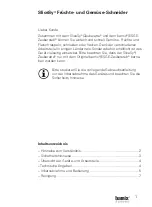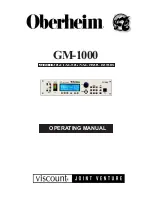
Module Functions:
Each of the two delay channels has both independent and shared controls. The Level, Mix,
Echo, Delay time and Tap are independent while the filter and switches are common.
Panel Controls:
LEVEL:
The Level controls set the input level to the module. These are simple attenuators
adjustable to prevent input levels from clipping which could cause distortion or harshness to
the sound. Clipping is indicated by the RED clip LEDs. The Echo amount and filter will also
influence the internal level within the delay and can cause clipping. Adjust the input level
accordingly to control overloading. The LEDS are Bi-Color. Red for clipping and Green for
sync or tap timing indication.
MIX:
The mix controls set the wet (delayed signal) and dry (input signal) mix input. With
these knobs set at mid point the mix is 50/50. There is also a CV control for mix that is
summed with the panel knob. CV inputs are all designed to accept up to +/-5V.
The mix controls also do double duty as delay level in Dual Tap mode. (See Routing switch)
ECHO:
The Echo sets the depth of regeneration or feedback for each delay channel.
High levels of feedback can introduce clipping which can be reduced with the channel input
Levels knobs.
Dual Delay 73B Manual
pg.1
























